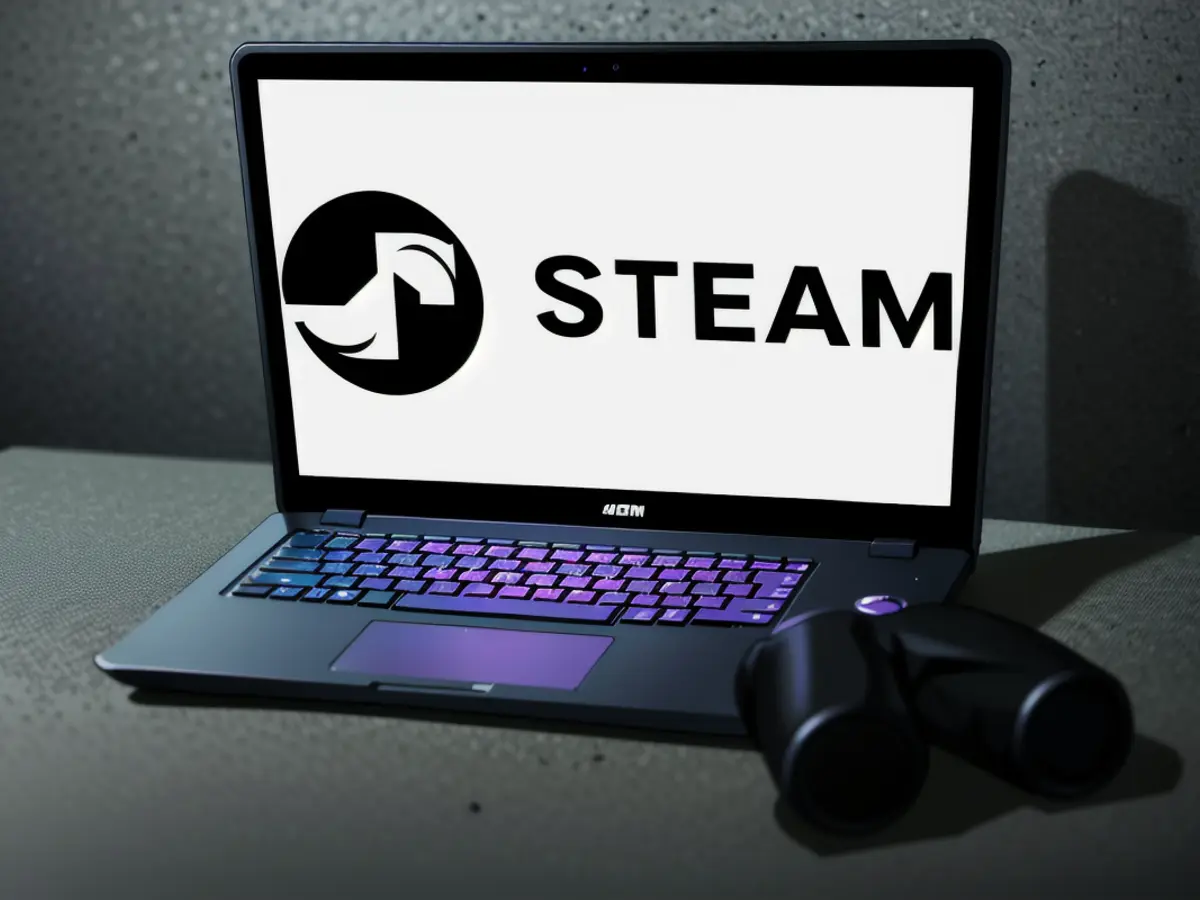Malicious Video Game on Steam Distributes Data-Snatching Malware to Players
Stream's Shocking Malware Scandals Exposed
Sniper: Phantom's Resolution, an infamous game available on Steam, was recently yanked from the platform following users' findings that it contained malware designed to pilfer sensitive data. The sinister software, masquerading as a legitimate Windows process, employed various evasive tactics, including launching and killing Node.js scripts, establishing startup persistence, all under the guise of a harmless game demo.
This isn't the first time Steam has faced such a debacle. Only a month prior, PirateFi, another game, was unmasked for spreading Vidar infostealer, a sophisticated malware that threatens passwords, browser session cookies, cryptocurrency wallets, and more. Around 1,500 unsuspecting users were reportedly ensnared in this ruse.
The Sniper: Phantom's Resolution episode showcases the use of external repositories and privilege escalation tools, while PirateFi demonstrates the effectiveness of social engineering, luring users with cryptocurrency themes.
The recurrence of these incidents raises concerns about the trustworthiness of digital storefronts that claim to safeguard their user base.
Gmail Steps Up- 3 Billion Users on the Line
FBI Warning: iPhone and Android Users Under Siege by Chinese Attacks
Google Pixel Takes the Crown - All Others Play Catch Up
Dangers Hidden in Plain Sight
The worrying aspect of these threats is that the malware wasn't lurking on sketchy third-party sites - it was hiding on Steam's official platform. This implies that attackers have discovered weaknesses in Steam's submission or moderation process, sometimes using obfuscated builds and fake assets to evade initial scrutiny.
Here's why this poses a significant concern:
- High User Trust: Players naturally trust platforms like Steam, Epic Games Store, and others to vet content.
- Rapid Contagion: A single infected title can be downloaded by thousands in mere days, granting attackers a vast pool of victims in no time.
- Advanced Obfuscation: Threat actors are employing advanced tactics, such as encryption, privilege escalation, and stealthy persistence, to avoid detection.
- Credential Theft & Account Takeovers: Players risk losing valuable assets, such as login credentials, stored payment methods, in-game assets, and cryptocurrency, when victimized by these attacks.
- Sluggish Detection: In both Sniper: Phantom's Resolution and PirateFi, users alerted authorities, not the platform itself.
Beyond the Gaming Sphere
While digital game stores are progressively bolstering security measures, such as SMS-based verification and more structured moderation workflows, these efforts have proven insufficient in the face of advanced cyber threats. The core issue remains that many platforms continue to rely on basic file scans or metadata checks during the game submission process, which can easily miss deeper behavioral indicators of malicious software.
Worsening the problem is lax developer verification, allowing fraudulent or fleeting accounts to slip through the cracks, upload harmful content, and disappear before raising red flags. Once malicious files are live, response times often lag, allowing malware to infect multiple systems before swift action is taken.
Perhaps most disheartening for affected users is the lackluster communication from platforms. When data breaches occur, notifications are often vague, slow to materialize, and leave users uncertain about the risks they've encountered and what actions to take in response. This fragmented response erodes trust and, more importantly, protection.
Actions Every Gamer Should Take
Though the primary responsibility lies with game platforms, users can and should take proactive measures to protect their systems. Check out these expert-endorsed practices for safeguarding your digital gaming experience:
1. Stick to Official Installers Only
Always download games and updates directly from official platform interfaces. Be wary of external links, even if they appear legitimate.
2. Employ Reputable Antivirus Software
Ensure your antivirus software is always up-to-date and perform regular scans. Real-time protection helps detect infostealers and other persistence scripts.
3. Crowdsourced Information: Check Community Feedback
Before installing a new, lesser-known title, peruse reviews and community forums. Suspicious behavior often surfaces quickly within these platforms.
4. Enable Multi-Factor Authentication (MFA)
Activate MFA on Steam and other platforms. Even if login credentials are stolen, MFA can halt unauthorized access.
5. Watch for Warning Signs
Remain skeptical of games featuring copied assets, vague developer histories, or titles that prompt external downloads.
6. Regular System Audits
Regularly check for newly installed applications, especially if your system behaves strangely post-game install.
7. Secure Backups
Maintain secure backups of crucial files and system states. If your device falls victim to malware, recovery becomes easier and less stressful.
8. Reset Compromised Accounts
If you suspect an infection, promptly change your passwords-beginning with email, gaming platforms, and financial services-and consider reinstalling your OS.
A Call for Action
Game platforms must take greater responsibility for their users' security. This encompasses using advanced malware detection, rigorous developer verification, and prompt action on user reports. When breaches occur, platforms must provide clear, expedient communications to affected users. Until these enhancements are implemented, players should remain vigilant and adopt protective measures accordingly.
Enrichment Data:
Digital game stores can strengthen their security measures by employing tactics like:
- Implement Strong Encryption and Authentication: Use SSL and TLS for encrypting sensitive data, and deploy 2FA or MFA to authenticate user identities securely.
- Keep Software Updated: Regularly update all software, including operating systems and applications, with the latest security patches to safeguard against known vulnerabilities.
- Reliable Antivirus Programs: Install and update reputable antivirus software to detect and remove malware from devices.
- Enhance Network Security: Secure networks by using firewalls, modern Wi-Fi security protocols, and MAC address filtering.
- Monitor Activity and Perform Regular Security Audits: Conduct constant monitoring for unusual activity and conduct regular security audits to detect potential security breaches.
- Secure Payment Solutions: Ensure payment solutions comply with industry standards, like PCI-DSS, and implement 3D Secure authentication for card transactions.
- Educate Users and Staff: Conduct regular cybersecurity awareness training for both users and staff to combat phishing attacks and enable users to identify suspicious activities.
- Use Data Analytics for Fraud Detection: Utilize data analytics to identify anomalies in user behavior, and tools like device fingerprinting and behavioral analysis to detect potential fraud or malware.
- Protect Intellectual Property: Protect proprietary code and game mechanics through methods like code obfuscation and encryption to prevent reverse engineering and ensure the integrity of the game.
- Establish Incident Response Plans: Develop and frequently test incident response plans to respond quickly and appropriately when security breaches occur, including clear communication channels for informing affected users and regulatory bodies.
- The use of Steam's official platform as a hiding place for malware shows that advance cyber threats can't be dismissed as just a problem for third-party sites.
- Malware in games like Sniper: Phantom's Resolution and PirateFi evade detection by employing advanced tactics, such as encryption, privilege escalation, and stealthy persistence.
- In these incidents, users have to alert authorities instead of the platform, which highlights a problematic communication gap that erodes trust and protection.




